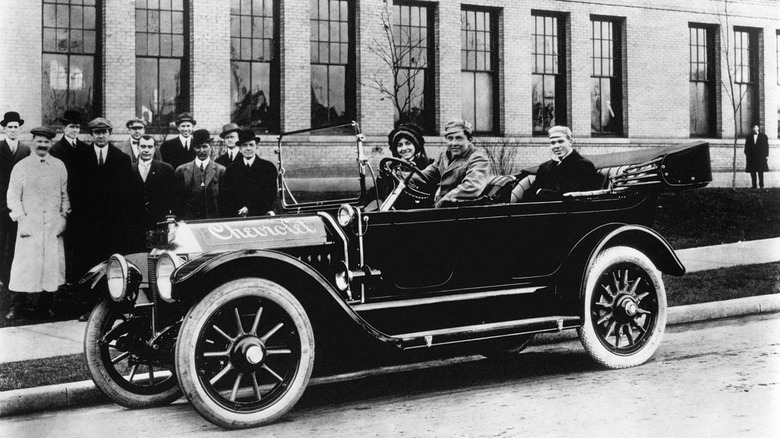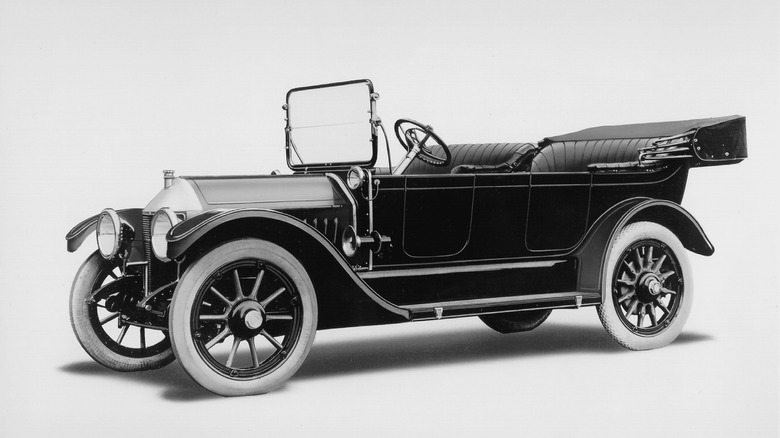Everything Chevy Fans Should Know About The Series C Classic Six
Chevrolet is an American icon, not only as an automaker but an industrial and cultural powerhouse that has been motoring along (and competing with Ford) for over a century. There is no end to the list of classic Chevys like the Bel Air, the Corvette, the Camaro, the Chevelle, and the Silverado. Some cars, like Chevy's line of pickups and the ubiquitous Suburban, have been in nearly continuous production since almost the company's founding. Chevrolet, as an automaker, was founded in 1911 and wasn't actually a part of General Motors until 1918. The name "Chevrolet" comes from a race car driver, Louis Chevrolet, a business partner of Chevy's founder, William Durant.
With all those Chevys dotting driveways, parking lots, and driveways all over the world, it's worth exploring the car that kicked off the company: the 1912 Chevrolet Series C "Classic Six." The Series C carried a princely MSRP of $2,150, according to the MotorCities National Heritage Area. Adjusted for inflation, that's $67,662.91, or roughly the price of an LS-trim 2024 Chevy Suburban. For comparison, its contemporary, the Ford Model T, costs around $850 ($26,750.45 adjusted for inflation).
The first Chevy
If you forked over a substantial amount of cash in 1912 to get yourself into the seat of a Series C, what did you get? You wouldn't get a Chevy "Bowtie" badge, as that wasn't on every Chevy until 1914. It was powered by a 299 cubic-inch six-cylinder engine that generated a thundering 40 horsepower (which was a lot for 112 years ago). According to the Sloan Museum of Discovery, which has one of two surviving examples, the Series-C's luxurious features included electric lights and a fuel gauge. It may look like a lot of other cars from the 1910s, but it was bleeding edge before the First World War. It's important to remember that horses were still a prevalent form of transportation when the Series C was new.
Production versions were reportedly made from 1912 to 1914 at Chevy's Flint plant in Michigan. Three total model years is barely a blip on the radar of automotive production, and the car was mostly a sales flop as it was too expensive compared to the competition. But the short production life and high price tag apparently didn't matter as the Series C helped make Chevrolet into a legitimate automaker over 100 years ago.
[Featured image by Chevrolet via Chevrolet Media | Cropped and scaled | CC BY 4.0 DEED]

